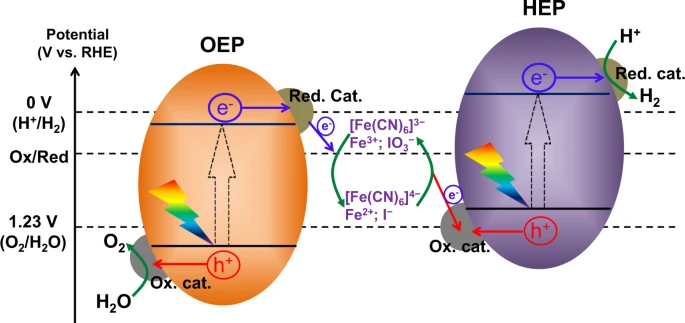Phys.org January 31, 2022
Bismuth vanadate (BiVO4) has been widely investigated as a photocatalyst or photoanode for solar water splitting, but its activity is hindered by inefficient cocatalysts and limited understanding of the underlying mechanism. An international team of researchers (China, Japan) demonstrated significantly enhanced water oxidation on the particulate BiVO4 photocatalyst via in situ facet-selective photodeposition of dual-cocatalysts that exist separately as metallic Ir nanoparticles and nanocomposite of FeOOH and CoOOH (denoted as FeCoOx), as revealed by advanced techniques. The mechanism of water oxidation promoted by the dual-cocatalysts is experimentally and theoretically unraveled, and mainly ascribed to the synergistic effect of the spatially separated dual-cocatalysts (Ir, FeCoOx) on both interface charge separation and surface catalysis. Combined with the H2-evolving photocatalysts, they constructed a Z-scheme overall water splitting system using [Fe(CN)6]3−/4− as the redox mediator, whose apparent quantum efficiency at 420 nm and solar-to-hydrogen conversion efficiency are optimized to be 12.3% and 0.6%, respectively…read more. Open Access TECHNICAL ARTICLE

The energy diagram for a two-step photoexcitation…Credit: Nature Communications volume 13, Article number: 484 (2022)